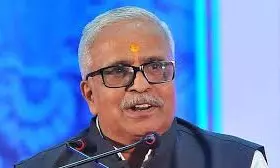Eclipsing the Don
Indians have years to prepare for the next total solar eclipse, on March 20, 2034, which will touch only parts of Jammu and Kashmir.;

The sight of Donald Trump glancing up at the sun from the White House’s Truman Balcony without protective glasses was the most curious image of the great natural spectacle of a total solar eclipse that held America in thrall on Monday. It could be said it was in his character to do the very thing he’s told not to. The rest of the US had prepared scientifically, with coloured glasses to keep out the sun’s harsh rays that can burn the human eye. For centuries, more ancient parts of the world have known you can’t stare into the sun without risking burns, which may not be immediately felt but could cause blindness in later years. Superstition may have been engendered too by this danger of looking directly at our brightest star, which may be why solar eclipses aren’t such a huge celebratory event yet in India.As millions moved to be somewhere on the 70-mile wide ribbon of land from Oregon to South Carolina to get the best views, it was their spontaneous enjoyment that was touching in an age where artificial embellishments have taken us away somewhat from nature. The American media’s eclipse coverage stood out, as science raced to make the best possible observation of the sun’s corona as the moon blocks out the sun’s disk, making visible the corona’s faint light. Indians have years to prepare for the next total solar eclipse, on March 20, 2034, which will touch only parts of Jammu and Kashmir. In South India, the next total solar eclipse will be on January 5, 2057.




